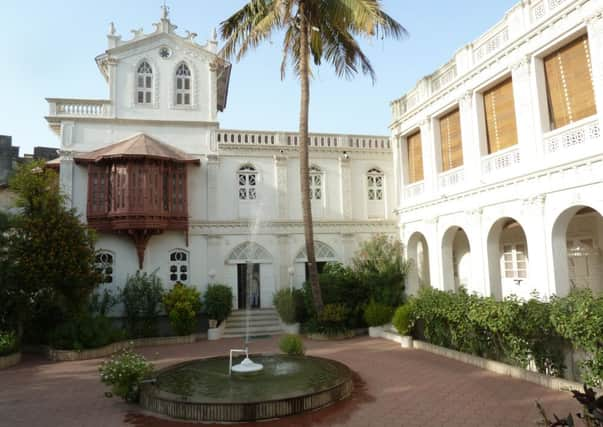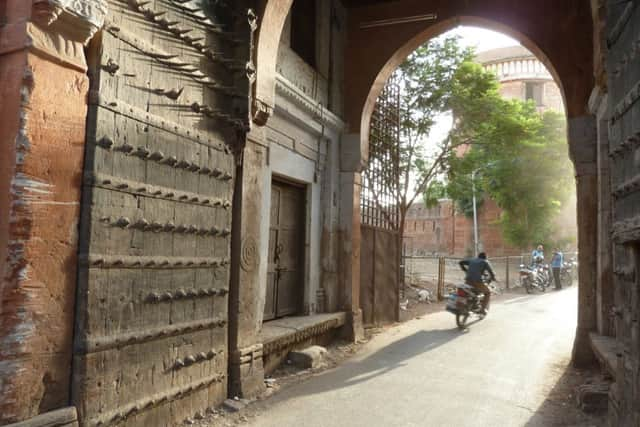A passage to hidden India


First things first. Gujarat, the far-west outpost of India on the shores of the Arabian Sea, is a “dry” state, with strict alcohol prohibition laws. So, moments after touching down from Britain, my wife Clare and I join the queue at the airport counter issuing tourist liquor permits (Condition No 6: The permit holder shall not get drunk in any public place).
Permits in hand, we join another queue at a government liquor store. In front of us, three Asian men are ordering crates of beer. “Haven’t had a drink for three days,” says the youngest of them, nattily dressed in singlet and shorts. Unexpectedly, he has a strong Welsh accent. I mention this to him. “Well I would, wouldn’t I?” he says. “We’re from Cardiff, over here for a family wedding. It’ll be orange juice when this lot’s gone.”
Advertisement
Hide AdAdvertisement
Hide AdGujarat is the home-state of many British Indians, with the Patel community the best-known of them. It’s an appealing, friendly, relaxing state, next-door to Rajasthan, whose vast forts and plush palaces lure crowds of tourists. Gujarat is much less visited, despite boasting plenty of places worth a long detour.


Among the most famous of them is the tenth-century Modhera sun temple, with its carvings of elephants, Hindu gods and sexual athletes. Even more startling are the Jain temples at Palitana – around 1,000 of them, gleaming white on a hilltop. Whole villages of pilgrims walk hundreds of miles to see them, and still have enough energy to climb the 3,500 steps to the top of the hill. A little further south, Sasan Gir national park is the last home of the Asiatic lion (just 400 survive).
We’re here outside the traditional Indian tourist season, generally reckoned October to March. It’s early May, just before the monsoon, with temperatures of 45C (113F) melting our shoe polish, but unexpectedly bearable.
Hence the need for beer. We stack a crate of it in the boot of a taxi and head into the heart of Ahmedabad, Gujarat’s main city. The driver stops next to an “ice-wallah”, who sits by the roadside with blocks of ice as big as packing cases, swathed in jute sacking to stop it melting. He chips chunks off it and they go straight in the car’s ice-box. Not high-tech but highly effective.
Advertisement
Hide AdAdvertisement
Hide AdAhmedabad, a vibrant place once known as “the Manchester of the East” thanks to its textile trade, has at least two fine “heritage” hotels where you can retreat when the vibrancy gets a bit too much. The House of MG, a 1920s industrialist’s mansion, is full of sepia family photographs and ornate décor somewhere between Art Deco and Art Nouveau.
Its candlelit rooftop restaurant serves superb thalis, chrome trays (sometimes banana leaves) constantly replenished with a bewildering range of curries. Like most Gujarati food, they’re vegetarian, and far sweeter than we’re used to in the west. Every night the room boy delivers a “Poem of the Day” on a plate of marigold petals. Bear this in mind: “The butterfly counts not months, but moments, and has time enough.”
Across the city, Diwan’s Bungalow is not, in fact, a bungalow but a luxurious 19th-century family home built around a courtyard with a fountain and lush greenery. Beyond its gates is a fascinating, and highly contrasting, glimpse of Indian street life .
Tailors whirr away at ancient Singer sewing machines; silver wedding carriages stand waiting for plumed horses and bashful newlyweds; a warehouse is stacked with 350,000 eggs, ready for distribution across the state.
Advertisement
Hide AdAdvertisement
Hide AdThis everyday side of the city is as absorbing as Ahmedabad’s two major tourist draws – the ashram set up by Mahatma Gandhi, complete with spinning wheel, and the Calico Museum, a fabulous textile collection dating back to Mughal times. It offers tightly-shepherded tours that sometimes leave the impression that visitors are a bit of a nuisance.
“Is this a palanquin?” I ask an Indian visitor as we gaze at a 19th-century Indian answer to the sedan chair. “I do not know,” he says. “My English is very pure.” “Poor,” says his wife quietly. Though not as poor as my Gujarati.
Guided by Yatendra Ramlawat, who lives in Ahmedabad, we explore the “pols”, the maze of narrow lanes, alleys and courtyards where 10,000 street traders somehow make a living selling mangoes or wedding garlands or children’s wooden toys.
The atmosphere is medieval, with buildings’ upper-storeys almost touching over the street, like York’s Shambles, but a thousand times busier. Vendors holler as they push carts piled high with vegetables or plastic kitchenware. We climb steep, ladder-like staircases to rooms whose woodwork is intricately carved with peacocks, parrots and elephants. Yatendra points out people buying grass to feed to cows, “so they can be blessed by them”. It’s an all-win arrangement, he says. “The cows get the food; the people get the blessing; and the grass-sellers get the money.”
Advertisement
Hide AdAdvertisement
Hide AdWe end the tour with cups of chai – sweet milky Indian tea – at the street-corner Lucky Restaurant, curiously built in a 400 year-old graveyard. A twisted tree grows through its roof and customers drink papaya milkshakes, unconcerned by the dozen or so petal-scattered tombs around them.
We have a further week in Gujarat, taking in the parched beauty of the Little Rann of Kutch (“rann” means salt desert; Kutch is a region) and the busy charm of Bhuj, a small town whose flare-lit bazaars glitter exotically at night.
In the village of Nirona, the quietly spoken Sumar Khatri creates “rogan” art on cloth, tracing delicate patterns with a thread of linseed oil and dye. His family are the last people in the world doing this. Over 10 days in Gujarat, we see perhaps a dozen other Westerners. Though we may have unwittingly missed hundreds of Patels from Cardiff.